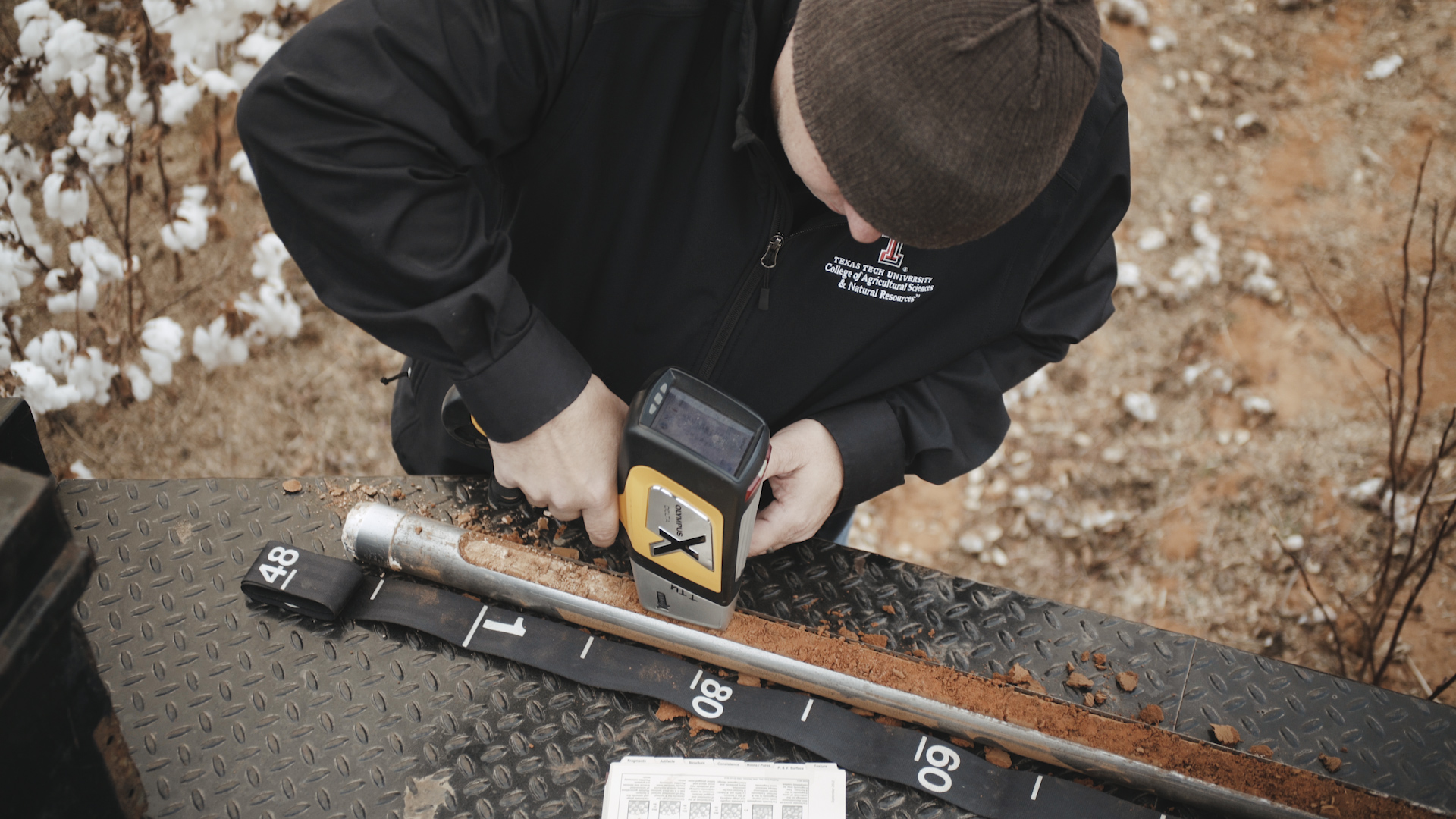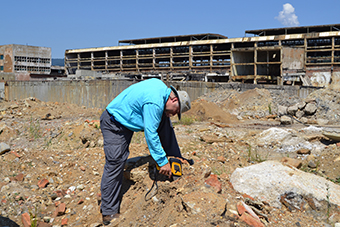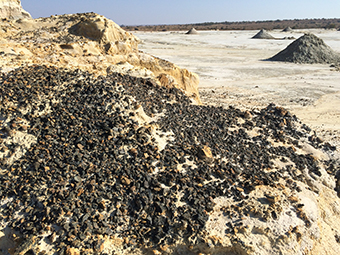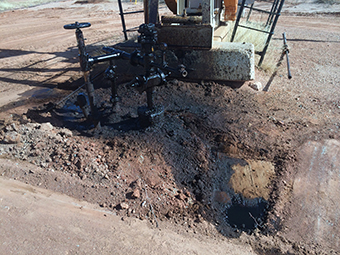Soil Science in Seconds
By: Hannah Fields
If you've ever watched Star Trek, you'll be familiar with the scanner they use when visiting a new planet to test its environment. Even if you're not a Star Trek fan, a scanner that can test the environment and give you a report in seconds sounds like the perfect tool. But, that's all science fiction, right? Not quite.

Dr. David C. Weindorf, Office of Research & Innovation faculty fellow and BL Allen Endowed Chair of Pedology in the Department of Plant and Soil Science in the College of Agricultural Sciences and Natural Resources at Texas Tech University, has designed a way to improve existing technology for better analysis of soil, water, and vegetation.
The two instruments used in Weindorf's research are the visible and near-infrared diffuse reflectance spectroscopy (VNIR-DRS) and the portable x-ray fluorescence spectrometry (PXRF). Both are available commercially and used extensively in Weindorf's lab.
"What our technology seeks to do is to take these two instruments and put them together so that when you scan vegetation, soil, or liquid, you're getting both of those scans conducted simultaneously," Weindorf said. "That doesn't mean in every scan you're going to use data from both instruments, but for a lot of applications we do use data from both instruments."
The VNIR-DRS works very well when measuring levels of moisture, carbon, pesticides, arsenic, organic chemicals, and the like in soil. Not only is the VNIR-DRS a useful tool in a lab setting, but it has also been essential in measuring the petroleum hydrocarbon levels in soils near oil spills. For example, Weindorf and his team were called to the Louisiana coast right after the Deepwater Horizon spill in 2010. Using the VNIR-DRS, they were able to demonstrate to the Coast Guard the level of contaminants left by the spill.

The PXRF, on the other hand, is like chemistry in a toolbox. When used to scan soil, it can return measurements of around 25 different elements in 60 seconds. These elements vary from essentials needed for soil fertility to pollutants like lead and mercury. When used on vegetation, the PXRF can't read nitrogen levels directly, but can read all other essential elements such as phosphorous, potassium, copper and zinc. Combine that technology with the VNIR-DRS, Weindorf says, and the information goes from good to great.
"One of the papers that we published a few years ago showed that by combining those technologies we can in fact measure nitrogen in the soil to get that most important plant essential nutrient quantified as well," Weindorf explained.
Information gathered by these combined technologies isn't just essential to researchers, but to everyday society, especially those who are at risk of being exposed to heavy metals. This exposure, Weindorf explains, comes in two forms: acute and chronic . Acute exposure happens in major instances like oil spills and, while dangerous, it's chronic exposure that is a greater threat to the environment and people alike.
"There are small amounts of elements people are exposed to daily, such as drinking out of a water fountain that might have polluted water or getting water out of a polluted well," Weindorf said. "It's nothing you can see or smell or taste, but you're putting that into your body."
The technology itself doesn't clean contaminated water or soil, but it's a much-needed tool to identify areas of pollution before a specialist is called in to clean those areas. With a portable instrument such as these it would be possible for areas to be assessed on site and move the cleaning process forward more quickly.

When measuring levels in soil, water, and vegetation, Weindorf and his team must take readings with the VSNIR-DRS and PXRF separately and then combine them using statistical algorithms. It is their goal to incorporate both technologies into one singular instrument, and they are currently speaking with several companies about making this a possibility.
The main hurdle to clear with the creation of this technology will be the cost. According to Weindorf, it will cost around half a million dollars or more to create the initial prototype instrument. That instrument will then need to be tested and tweaked before a final product is ready to be scaled down for production. Once ready for production, the cost per unit will come down significantly.
"Our target price would be $75,000 per unit," Weindorf said. "It sounds like a lot of money, but when you consider the accuracy and speed in which we are able to produce these results, and the fact that a single analyst could run 200 samples per day, you're saving $100 to $200 per sample."
However, if researchers choose to stick with traditional laboratory analysis, Weindorf says this technology can be used to refine analysis of samples from a potentially polluted area. For example, for every 100 samples taken, only five may have pollutants. Instead of processing all 100 samples, they can be scanned with the VSNIR-DRS/PXRF technologies and identify the five polluted samples quickly. Those five samples can then be taken to the lab and processed, saving both time and money.

The technology was just awarded its first patent, and Weindorf and his fellow colleagues have a positive outlook for its future.
"We feel that this is really an emergent technology," Weindorf said. "Another important development was a second (unaffiliated) research group at University of Sydney that have tested this combined technique and said that they highly recommend these types of combined approaches. We have an independent validation. Our research groups are continually pushing each other to new discoveries; it's back and forth in a good way."
Discoveries
-
Address
Texas Tech University, 2500 Broadway, Box 41075 Lubbock, TX 79409 -
Phone
806.742.3905 -
Email
vpr.communications@ttu.edu
